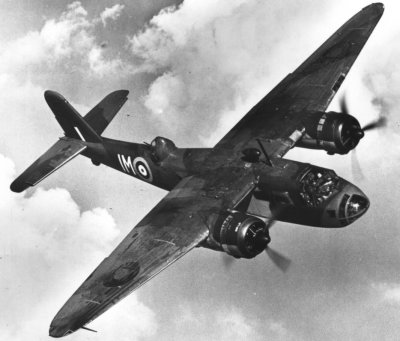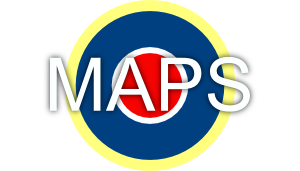Patrons:
Air Marshal Sir Ian Macfadyen
The Lieutenant Governor, His Excellency Lieutenant General Sir John Lorimer KCB DSO MBE
Aircraft Crashes on Cronk Ny Irrey Laa - Blackburn Botha, L6314
On March 12th 1942 a Blackburn Botha of 3 School of General Reconnaissance at Squire's Gate, Blackpool crashed on the cliffs on the west coast of the Isle of Man. The crash site has recently been found and surveyed by the Society.
The Botha, a high-winged, twin-engined aeroplane was designed as a torpedo bomber and reconnaissance aircraft but was not an operational success due to lack of engine power. A use was found for it as a training aircraft and many were based at Squire's Gate and at Mona in Anglesey
 Contemporary reports of the crash site record that the wrecked airframe came to rest on a steep slope and that before being able to recover the bodies of the four crew the rescue party had to secure the wreck to an outcrop of rock to prevent it sliding into the sea. Ballabeg resident and retired butcher George Costain recalled the crash site as being on a grassy slope near the Sloc, and based on this report MAPS member Ivor Ramsden spent many hours searching the steep slopes in that area, northwards towards Eary Cushlin. The slopes are virtually uninterrupted from sea level to about 800 feet, and are exhausting to search. The search efforts were encouraged by reports of wreckage such as aero engines and aluminium panels having been found over the years all along the coast in beaches and gullies.
Contemporary reports of the crash site record that the wrecked airframe came to rest on a steep slope and that before being able to recover the bodies of the four crew the rescue party had to secure the wreck to an outcrop of rock to prevent it sliding into the sea. Ballabeg resident and retired butcher George Costain recalled the crash site as being on a grassy slope near the Sloc, and based on this report MAPS member Ivor Ramsden spent many hours searching the steep slopes in that area, northwards towards Eary Cushlin. The slopes are virtually uninterrupted from sea level to about 800 feet, and are exhausting to search. The search efforts were encouraged by reports of wreckage such as aero engines and aluminium panels having been found over the years all along the coast in beaches and gullies.
Early in 1998 MAPS member John Qualtrough took another eyewitness back to the area and found a single piece of aluminium panelling. He took photographs of the site and passed them to Ivor for further searching. From the photographs Ivor found the crash site for himself, north of the area where he had concentrated his earlier searches and about 150 yards south of Lag ny Keeilley. Ivor’s son, Sam, first found a small piece of surface wreckage and a metal detector search revealed large numbers of finds. The site extends from about 800 feet down a steep slope to a more level area at about 150 feet, then a surface wreckage trail can be traced across land belonging to Manx National Heritage (where special permission is needed to carry out metal detector work) down to sea level.
Although from the finds it has not been possible to locate the initial impact site it is believed that this is close to a large square outcrop of rock at 800 feet, where sections of canopy framing and perspex were found. The Botha has four prominent fairings on its upper wing surface which cover the fuel tank vents. All four of these were found in a patch of scree along with the base of the D/F loop. The condition of all these upper-surface fittings suggests that the wreck was dragged down the slopes upside-down. Contemporary reports say that the wreck was pushed over the cliffs into the sea and our findings seem to suggest that this did indeed happen as significant parts of the aircraft have been found almost down to sea level and many of these fragments are driven deeply into the ground in a ‘downhill’ direction. Nothing has been found on the rocky shore so it may be that the wreck was towed out into deep water to avoid its frequently being sighted and reported as a new wreck. An aero engine is said to be lying in a sea cave which is accessible at low tide just north of the crash area. It may be that this is from the Botha although how it came to be in the cave is open to speculation. Possibly it was buoyed by the fuel tanks in the wing which will have since been broken up by the sea. There are stories that there was an undercarriage unit and a propeller in the same cave many years ago and that the tyre was burnt at some time. This site will be investigated when time permits in an attempt to identify the engine.
A trail of engine parts distinct from the main area of wreckage leads down a narrow gully. This suggests that at least one engine detached from the main wreck.
Many of the recovered parts have been identified. These include parts of the gun turret, the engine rev counters from the instrument panel, crew’s flexible oxygen pipe, control linkages and engine parts including fire extinguisher nozzles, an oil pump, parts of the crankcase and cooling gills.
Blackburn Botha photograph by kind permission of British Aerospace (Military Aircraft) Limited.
